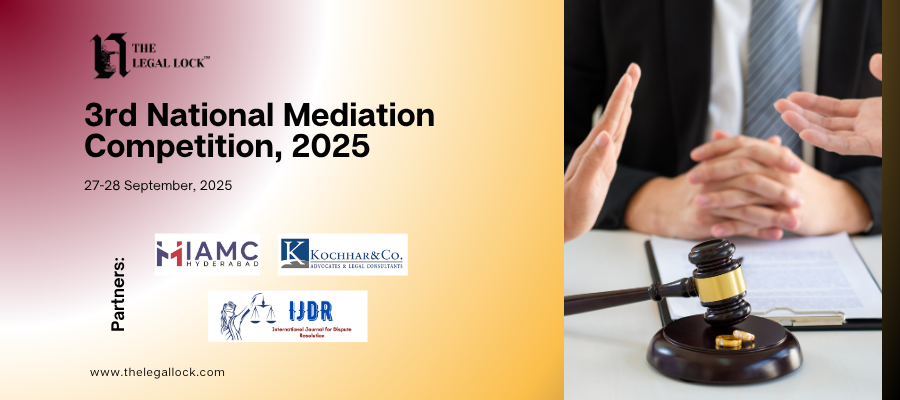STALIN, STALINISM AND RUSSIA: A DETAILED REPORT

by: Anuj Kulhar

Stalinism And Its Nature
Stalinism’s nature has always been a hotly debated topic, with political implications for almost all sides. A new “Soviet system” emerged in the 1930s, assuming both a historical necessity and immutability, though Soviet and Western commentators disagreed about its nature. From the Soviet perspective, the revolution brought socialism. The result was a totalitarian dictatorship in the West (except for a few Soviet sympathizers).
The system was the antithesis of Western democracy and a major ideological rival globally. After Stalin’s death, changes in the USSR caused both sides to rethink their positions, particularly on the Soviet system’s intransigence. The Soviet Union tried to distinguish between the legitimate “Leninist” outcome of the Revolution and the temporary “excesses” of the Stalin period.
Changing Cold War assumptions in other areas prompted Sovietologists to reexamine the totalitarian model, now criticized for its inherent political bias and inadequacy to contemporary Soviet reality. The term “Stalinism” was preferred over “totalitarianism” at the 1975 Bellagio conference organized by Robert C. Tucker, despite strong opposition to the totalitarian model before Stalin. Soviet totalitarianism, before and after Stalin, has been gradually discredited by political scientists, while tacitly accepting its applicability to the Stalinist system.
Aside from the model debate, other recent developments have influenced Western Soviet scholarship. That historians are now studying the Soviet Union from 1917 to the end of Stalinism is the most important for our purposes. “Of course, there were historians on the field, some very good. But the new cohort is larger, with a stronger sense of group identity, and a stronger desire to be historians.
This assertion of professional identity serves two purposes. First, the new cohort is promoting Soviet history as a legitimate field, highlighting recent improvements in access to Soviet archives and other primary sources, and emphasizing its professional qualifications. Second, it distinguishes itself from the older generation of Sovietologists, dominated” by the totalitarian model.
Interpretations of the Stalinist State and Society
It is often said that the Stalin era was a period of the state against society, nachal’stvo vs narod. This is a common structure in Russian history. Essentially, society reacts to state pressure by resisting, evading, or subverting it. The totalitarian model, a compatible concept of twentieth-century American political scientists, has been reinforced in scholarship on the Soviet period, particularly the Stalin era.
“The Soviet totalitarian state seeks to transform society according to Marxist-Leninist ideology, using the Communist Party to mobilize and police coercion and terror to enforce its dictates. The totalitarian regime transforms society into an inert, featureless object that it shapes and manipulates. As a result, scholars are more inclined to study state mechanisms than social processes. Soviet studies, therefore, dealt with society almost exclusively through state and party intervention.
These interventions are well documented in the academic literature on Stalin: forced collectivization, subordination of unions, labour discipline laws, development of the Stakhanovite movement under party sponsorship, harassment of the old intelligentsia, establishment of party controls over culture and scholarship, censorship. The peasants and collectivization, or the intelligentsia and cultural controls, are examples of resentful social responses to state intervention. But this is the only social response generally discussed, and non-state-intervention social processes are” virtually absent.

Stalin and Stalinism
Trotsky didn’t like to laugh. Even he could have guffawed at the notion of studying his arch-political enemy’s philosophy. Stalin was a moron to Trotsky, a theoretical nonentity capable of clumsy copying. It’s a mindset Erik van Ree discovered while writing his book. In reality, van Ree is part of a newer movement to take Stalin’s ideas seriously. Van Ree admits that “the intellectual history of Stalinism is not particularly profound.”
“For van Ree, Stalinism is a strange mix of Marxism’s fundamental ideas, notably a planned economy and a super-powerful state to destroy private property and the bourgeoisie, with patriotism, initially connected to a revolutionary program in France. Patriotism was a Jacobin trait that influenced socialist theorists from Austro-Marxists through Lenin. Stalin, van Ree believes, gained a ‘revolutionary patriotic’ viewpoint from later theorists rather than through the thorough reading of classic French revolutionary texts.
A socialist revolution might not only transcend national boundaries but also inspire patriotism and pride. Despite increasing concessions to patriotism, seen in the rise of ‘national Bolshevism’ from the mid-1930s, van Ree claims Marxism maintained Stalin’s dominating influence. Some observers have interpreted Stalinism’s emphasis on Russian successes as proof that Stalin was abandoning proletarian internationalism for Russian nationalism.”
Van Ree disagrees. Stalin’s Marxist vision for Russia and the world sets him apart from Russian Nationalists. Stalin may have referred to the state-building efforts as progressive, but he regarded them as failures. The USSR under communism would not decay.
Soviet Nationality Policy and the Russian Questions
The Stalinist “solution” to the Russian national identity crisis in the 1930s should be seen from the perspective of the 1920s Soviet nationality policy. According to Lenin’s theory of imperialism, the dominant and “advanced” nation historically exploited the “lesser and ‘more backward’ nations. That the dominant nationalism was suspect due to its inherent chauvinist nature, whereas the oppressed and backward nations’ nationalism deserved support as long as it did not encroach on the greater interests of the world proletariat.”
“Under imperialism (‘as the greatest and ultimate stage of capitalism’), colonial peoples had become the worldwide counterparts of the Western working class,” writes Yuri Slezkine. They were entitled to special attention until the economic and psychological scars of colonialism were healed. Meanwhile, countries were equal.” For subjugated ‘proletarian’ countries, the 1920s and early 1930s saw a widespread territorialization and institutionalization of ethnicity.
“Created as territorially defined units of and for the eponymous nationality, union republics and autonomous republics solidified the link between ethnicity, governance, and territory. It resulted in a more ethnically diversified communist party leadership and national republican elites interested in furthering local constituents’ interests, even if within the party’s doctrinal bounds. It was the multiplication and codification of local languages that led to the blossoming of national cultures as the first ‘dialectical step’ towards their eventual synthesis in a universal Soviet proletariat culture of the future.”
“The establishment of native educational institutions as a method of overcoming peripheral ‘backwardness’ boosted republican intelligentsia groups as traditional cultural bearers. Finally, the introduction of internal passports (1932) and bureaucratic personnel forms (1933) solidified ethnic identification on an individual level. In conclusion, early Soviet nationality policy led to the long-term solidification of national particularism by turning the USSR into an ‘incubator of new nations’ rather than a ‘melting pot’.”
“The impact of this strategy on ethnic Russians as the ‘oppressor nation’ is less clear. As a collective channel for proletarian internationalist awareness (‘socialist content’), ethnic Russians helped oppressed nations overcome their ‘backwardness’ and establish their own ‘national forms’ in the 1920s. Due to the attacks on the Orthodox Church as a store of conservative ideological traditions and imperial Russian history as a catalogue of chauvinist atrocities against lesser nations, the genuine Russian national past was limited to the revolutionary precursors of the Great October.”
“From an institutional perspective, the Russian Republic (RSFSR) was the remnant of the Russian national homeland (republics, autonomous provinces, national districts) carved out of imperial Rossiya. Individually, ethnic Russians residing in the RSFSR could only be treated as proletarians, i.e., based on class, not ethnicity.” (Sovetskiy Narod) was free of ethnic content, even though it acquired certain emotional implications over time.
C: Socialism in A Single Country and “The Formation of The Soviet-Russian Identity”

Stalin’s logic has consequences for “relations between Russians and non-Russians as well as between the Soviet vanguard and the Russian people. What to do with the reality that the great majority of Russians were still non-proletarians?” “The Soviet Union (‘Russia’) was objectively a socialist country, and its proletariat its backbone. But what to do about the disparity between the Soviet political superstructure and its still-weak industrial-proletarian base?” “In the NEP alliance (smychka) of workers and peasants, how could the Russian proletariat progress without stepping on the ‘petty-bourgeois property impulses of the peasantry, showing their genuinely backward ways?”
From a proletariat perspective, the Russian question seemed more difficult than the non-Russian ethnicities. The oppressed ethnicities may become Soviet via their national cultures, but not the Russian peasant. Since the “Holy Russia of icons and roaches” culture was the greatest impediment to the “Russian people (narod) reaching a higher, Soviet, and ‘truly national’ level of life, Russian peasant culture was objectively unsalvageable.
The steadfastness with which some 1920s peasant writers praised rural Russia, comparing its antiquated ideals with progressive urban-proletarian Soviet Russia, simply added insult to injury. The NEP smychka was not a license for ideological backsliding into ‘peasant socialism’ or ‘quasi-popular nationalism,’ but rather a transitory stop on the route to the eventual victory of urban-proletarian Soviet Russia.”
Stalinism’s Legacy in The Post-Stalin Era
Stalinism was ‘the youth of real communism,’ wrote “Soviet dissident Aleksandr Zinovyev in a poignant autobiography, when the conceptual and institutional roots of the Soviet social order were laid. This phrase holds for the connection between the Soviet state and the Russian people. However, post-Stalinist changes, especially Khrushchev’s thaw, were significant cultural and political developments, since the idea of Russia’s victimization by Stalin’s Sovetskaya Rossiya influenced many key literary works.
It also does not diminish the importance of the Brezhnev leadership’s efforts to coopt unofficial Russian nationalism for the Soviet cause at the expense of its openly chauvinist and non-Soviet (but not anti-Soviet) manifestations. On the other hand, successive advances were variations on a core motif set by Stalin.”
Subdual of “Russian society by a powerful Soviet party-state whose ideological foundation was Marxism-Leninism. As a result, the state attacked all genuine Russian nationalisms, civic and ethnic, while incorporating aspects of nationalist ideology into the official worldview. The Soviet-Russian working class was repeatedly referred to as ‘the elder brother’ in the Soviet family of nations, or as having led the brotherly nations to victory in the Great Patriotic War.
Moreover, important scientific-technological advances (the hydrogen bomb; space conquest) were presented as triumphs not just of Soviet socialism but also of the Great Russian People. Finally, the strength of the Soviet state, the world’s largest state, could fill (indeed, as Stalin would have it, must fill!) the souls of all Soviet Russian proletarians with strong feelings revolutionary national pride.’ It was possible to promote a siege mentality in which the adversaries of the communist fatherland posed as ‘traditional opponents of the Russian people.’”
Conclusion
The relationship between Stalinism and Russian national identity can be viewed from various angles. “Thus, in his study of National Bolshevism, David Brandenberger argues that Stalin’s ‘Russo centric etatism’ served as ‘the catalyst for the formation of a mass sense of national identity within Russian-speaking society between. Due to mass education and propaganda reaching record numbers of newly literate and socially motivated ethnic Russians, the late tsarist and early Bolshevik times were either inaccurate or ideologically unthinkable. As a result, contemporary Russian speakers could ‘articulate what it meant to be a member of a Russian national community in a way that the majority of Russians could not. Thus, the Stalinist state accidentally sowed the seeds of the new Russia.”
Despite their fondness for the Putin era’s relative stability and ‘order’, ordinary Russians are feeling estranged from the state. “Former Russian physicist turned underwear salesman: ‘The government has been blaming us for living in Russia for 1500 years. Such feelings, while ‘anecdotal,’ speak volumes about Putin’s state-building effort. According to Liliya Shevtsova, Putin’s Russia “went toward bureaucratic order’ rather than restoring legal order through public participation and institution construction. History shows that the elite failed to realize that ‘bureaucratic modernization’ cannot meet the needs of a smart and educated population living in a highly civilized society.
Post-Putin affluence, international posturing, military build-ups, and official propaganda will not fix the issue of the state-nation-society relation. A new variation on official nationalism’s long history in imperial and Soviet Russia may be found in the selective rehabilitation of the Soviet past and its absorption into state iconography.” It’s a situation that stifles Russian nation-building and does little to reconcile the state-nation gap.








